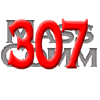|
Frequency: Frequent exposure to your
message is the goal achieved by exposing target audience to
substantially the same message. Repetition builds retention.
 | Reinforcing the message ... vital in public relations (even more than
in advertising) |
 | Principle behind developing PR materials that
share a “family resemblance.” Increases awareness of
organization. |
 | Cross-selling: Permit audience to transfer past
positive experiences with the organization and its services or
products into new area, potentially increasing credibility. |
Graphic standards: Tool for building
“family resemblance”
between all materials — developing a sort of brand name and image for programs and services
 | Recognition of related information
Attention-getter
Explains relationship between varied efforts
"Buy-in" for stakeholders
|
 | Graphic standards: rules for use of logos,
colors and other identifying marks to control communications messages and image |
Method for increasing frequency/reinforcement and maintaining
professional image
 | Time-saver for those who prepare materials
(including PR department and other departments that sometimes
develop their own brochures and newsletters)
Makes preparation of new projects as easy as "filling in the blanks"
Leaves fewer decisions to be made by individuals all over organizations |
Logo and standards considerations
 | Should work in B&W as well as color. (How will it fax?) |
 | Two-color: less expensive to print — full
color logos will increase the cost of every single piece that must
be printed, from packaging and publications to letterhead, business
cards and vehicle signs. |
 | Is the logo adaptable for both spot color (PMS
color) and CMYK
reproduction? |
 | Must be available in various forms
(Olden days) Logo slicks
(Now) Digital versions: .tif, .eps and .gif/.jpg |
 | Logo may include a positioning statement as
well as name & graphics
For example:
Family-To-Family Network, Helping Hands Across North
Dakota |
Working with Printers
 | No such thing as a price list! |
 | Bid system amounts to finding out who wants your job the most
at the moment |
 | Franklin Book ... traditional source of standardized prices used for
bidding. Bids are based primarily on the time the printer estimates will be
needed to produce the job. |
 | Printer loyalty ... why should you consider it?
Predictable results
Good working relationship (2-way communication, assistance with
technical issues)
Will try hard to meet occasional needs for special level of service |
Planning the print piece
Optimize physical specs to fit target audience.
 | Length of copy, size of finished piece (easy to
read, handle) |
 | Method of delivery |
 | Use of color ... quality of illustrations/photos/graphic
design |
 | Quantity of copies that are needed. Does this
have a long shelf life? If so, ordering more copies may be more
economical.
|
 | Avoiding “conspicuous consumption”
 | NPOs that depend on donations or government
funds may want to avoid appearance that's too expensive-looking,
giving the appearance of thriftiness. (Classic reason to avoid
full-color printing, even though its cost may be no greater.) |
|
Bidding print projects
 | Quantity: Specify 2 or 3 amounts (1,000,
2,000, 3,000)
 | Fewer than 500 will cost about same as 500 in most cases. Aim
for largest quantity that can be used – much cheaper to get additional copies at time
of original printing (versus going back to press) |
|
 | Size: Finished dimensions of piece
 | (For
example, a typical 4-page newsletter is "11 x 17 folded to 8.5 x 11")
Specify both sheet size and fold/trim size,
as well as whether or not the
piece uses bleeds. (Bleeds
are photos or art that extends past
edge of page) |
|
 | Materials provided to printer on disk or camera ready? |
 | Color separations & halftones
 | Will you
need them? Will the printer be required to scan art and make them? If you do
your own scanning or use an outside vendor, you can provide these as part of
your disk files and eliminate this substantial cost. |
|
 | Proofs: Rainbow, Iris direct proofs; Color
Key; bluelines (Dylux) |
 | Pages: Number of pages (front & back of
sheet count as 2 pages) |
 | Stock: Kind of paper (weight, appearance,
surface)
 | Coated vs. uncoated |
 | If coated — shiny (enamel or gloss) vs.
matte (dull surface) |
|
 | Ink: Black counts as one color. (White is
free)
Full color ... CMYK (Hexachrome coming, will use 6 inks)
Metallics cannot be printed in CMYK
Specific spot colors — Pantone Matching System (PMS colors) |
How long does it take to print a project?
Reasonable: 2-3 weeks in shop
Miracle: 2-4 days
Customer proofing: Sign-offs (documenting
your approval) at each step of prepress process
* YOU are responsible if you sign off on blueprint but miss errors.
Customer changes in job while it's at the printer are
usually billed at cost over and above original bid.
Printing prices are mostly based on time (human &
equipment). Ink and paper are relatively inexpensive parts of the whole.
|

